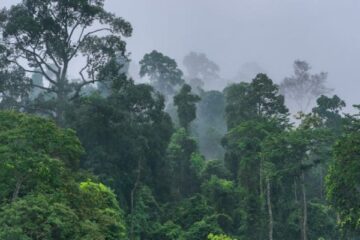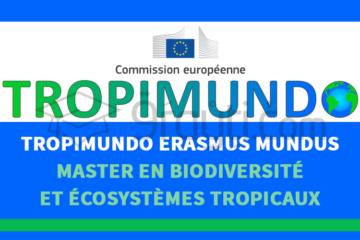I. Introduction
A. About Global Forest Watch
Global Forest Watch (GFW) is a free forest monitoring system that provides timely and actionable information to support the sustainable management and conservation of forest landscapes. GFW has been used by civil society organizations, journalists, communities, governments and companies around the world to see where, when and why deforestation is happening and take action to address it.
Global Forest Watch offers a suite of tools to meet the needs of a wide range of users.
Using GFW’s interactive online platform, users can visualize, analyze, and download a wide array of geospatial and statistical data related to forests, including near real-time alerts showing the precise location of recent forest disturbances. The Forest Watcher mobile app allows users in remote areas to access GFW data offline via their cell phone or tablet. Anyone can build a customized platform using GFW’s MapBuilder template. GFW Pro is a management system used by companies, banks, and anyone else seeking to monitor forests across a portfolio of locations and translate geospatial data into actionable insights. GFW Pro enables you to securely manage deforestation risk in commodity supply chains. Since its launch in 2015, more than 3 million users have visited the GFW website from every country in the world. In addition, WRI, in collaboration with national governments, have developed a number of Forest Atlases that can also be used to access GLAD alerts and other forest change data.
Global Forest Watch is made possible by a growing partnership of over 200 organizations, convened by the World Resources Institute.
B. The Small Grants Fund
The Global Forest Watch Small Grants Fund (SGF) seeks to promote broad uptake and effective use of GFW tools and data by civil society organizations around the world. Successful projects translate data into action, applying GFW to overcome challenges in protecting the world’s forests. See past projects here.
In 2020, the Small Grants Fund will continue to focus on rapid response to deforestation through the use of early warning systems to identify, verify, investigate, and act upon satellite-based alerts, with a primary focus on the Global Land and Discovery (GLAD) weekly deforestation alerts and, optionally, NASA’s VIIRs active fire alerts for improved forest management, law enforcement and advocacy. These alert systems are available through the GFW suite of tools (GFW platform, Forest Watcher mobile app, MapBuilder, GFW Pro, Forest Atlases). For more information on deforestation early warning systems, please review this explainer blog.
SGF grants at a glance:
• The SGF awards organizations between $10,000 and $40,000 USD • Depending on funding and project budget size, the number of projects selected can range from 8-15, with 12 being the average
• Projects will run from August 2020 – July 2021
• Each grantee will be assigned a WRI staff member as an advisor, who will provide remote technical support and other assistance
In addition to the financial support and technical assistance, SGF recipients become part of a network of organizations and receive benefits that extend beyond the lifetime of their grant. These include membership in the GFW Partnership, opportunities to connect with others in the GFW network, invitations to GFW events, opportunities to test and provide feedback on new GFW features, and the potential to be featured in blogs, social media, or other WRI communications materials.
II. Eligibility
A. Organizational Eligibility
In order to meet WRI’s requirements for subgrant eligibility, organizations must:
• Be legally constituted as non-profit and non-governmental;
• Have a total annual budget greater than $50,000 USD;
• Possess a computerized financial system for tracking and recording expenses (preferably not Excel);
• Be able to complete an organizational assessment document (containing questions regarding organization governance, financial and compliance structure) in fluent English.
• Be able to provide either your organization’s most recent audit, or ALL three of the following documents:
1. a Balance sheet for the most current and previous year;
2. an Income Statement for the most current and previous year;
3. a Cash Flow Statement for the most current and previous year
• Receive a rating of medium to low risk on WRI’s organizational assessment, which will be carried out once finalists are provisionally selected.
NOTE: Most grant recipients will be required to undergo a grant-specific audit at the end of the project. GFW will cover the cost of this audit up to a pre-determined amount.
B. Project Eligibility
The Small Grants Fund seeks applications for projects that clearly demonstrate how the organization intends to use early warning data (GLAD alerts) to enhance local responses to forest threats. Applicants are also strongly encouraged to use additional data on GFW or from other sources as relevant related to land cover, land use, and forest change.
Applications should clearly articulate who the project aims to influence and how project activities will lead to improved response to deforestation. Projects may employ one or more of the following approaches to influencing these actors:
• Community engagement
• Advocacy
• Forest monitoring and enforcement
• Storytelling/journalism
Successful projects will be those that have a demonstrated commitment to forest monitoring and sustainable forest management, and can articulate how the addition of early warning systems accessed through GFW tools will provide a value add to their existing work. They will also be able to convey which stakeholders are critical for their projects’ success and describe the nature of existing relationships with those stakeholders or outline a clear plan for establishing any new relationships with those stakeholders.
The selection committee will also be looking for projects that are feasible while also likely to attain a meaningful result or results leading to decreased deforestation. Examples of past outcomes from successful projects include:
• A conservation organization collaborates with park rangers to patrol a protected area and collect data using GLAD alerts accessed through the Forest Watcher mobile app. They identify an illegal logging camp within the reserve, document their findings, and the perpetrators are fined.
• An indigenous community uses GLAD alerts to identify the location of an illegal mining site, and document further evidence of the site by taking aerial photos with a drone. They compile the data, maps and photos and submit a formal complaint to local authorities, who then shut down the site.
• An advocacy organization uses data on GFW to map, monitor and demonstrate instances of illegal land grabbing by a commodity company, and launch a campaign to apply public pressure for a response. Efforts lead to the successful revocation of the company’s concessions.
• A land rights organization analyzes data on GFW and demonstrates the effectiveness of a community-managed forested area in reducing deforestation. They submit this evidence to the appropriate ministry, and the community’s land rights are expanded.
• An investigative journalism organization uses the GLAD alerts to demonstrate the noncompliance of an infrastructure project with its environmental management plan. The responsible company is fined as a result.
• An environmental justice organization builds a MapBuilder platform to notify communities of the impacts infrastructure projects are having on deforestation. The platform generates increased citizen awareness and public participation in the project approval process, and policies are strengthened in favor of improved informed prior consultation.
C. Geographic Eligibility:
With the recent expansion of the GLAD alert system, countries across the entire Pantropical region now have access to weekly updates on changing forest conditions in near-real time. However, due to the nature of how tree cover loss is measured – i.e. tree cover greater than 5 meters in height with greater than 60% canopy cover – the GLAD alerts system works better in some countries than others.
To ensure that the geographic area of your project is likely to be compatible with the GLAD alert system, your project must focus on one (or more) of the countries listed below.
Africa
Cameroon
Republic of the Congo
Democratic Republic of the Congo
Rwanda
Liberia
Uganda
Madagascar
Asia
Cambodia
Myanmar
Indonesia
Sri Lanka
Laos
Vietnam
Malaysia
Latin America
Belize
Ecuador
Nicaragua
Bolivia
Guatemala
Panama
Brazil
Guyana
Peru
Colombia
Honduras
Paraguay
Costa Rica
Mexico
Suriname
Your organization may be registered in a country outside of those on this list, as long as your project focuses on geographic areas within one or more of these countries.
The application will also ask you to indicate the specific area(s) within these countries where you will be implementing your project. To do so, please visit the GFW platform at www.globalforestwatch.org. Change the language to your language of preference, and then navigate to the map. Once on the map, deactivate the Tree Cover Loss and Tree Cover Gain layers, and activate GLAD deforestation alerts. Then navigate to the area(s) on the map where your project activities will take place. Once you’ve located your geographic area(s) of interest, please share this with us in the space(s) provided in the application form. You can share up to five links.
III. Application Process
All applications must be submitted by March 1st, 2020.
To apply, please visit the Grants and Fellowship page on the GFW website and click on “Apply Now.” This link will direct you to the online application. Once you have started your application, you may save and return to it anytime.
The application contains two sections: organizational information and project information. You will also be required to upload a project budget and project logframe, using templates that will be provided to you via the application software. Letters of support from project partners or previous funders are welcome but optional.
Each section should be completed in its entirety. Please include a detailed justification of each budget line item in the “Budget Detail” column in the provided template. While there are no explicit ceilings for any individual budget line, General and Administrative costs should be limited to ten percent or less of the total budget. If you have any difficulty responding to a question, please contact gfwfund@wri.org for guidance.
Please note, all applications must be completed in English, with the exception of applicants from the Democratic Republic of Congo, the Republic of Congo, and Madagascar, which may submit responses in French. Please note however that we will not be able to provide a translated version of the application; applicants from these countries should submit French responses to the application in English.
IV. Selection Criteria and Process
All applications will be reviewed by the Small Grants Fund selection committee following the submission deadline. The committee is comprised of World Resources Institute experts in forest policy and management, human rights, advocacy, geospatial analysis and remote sensing.
The committee will systematically score all applications based on the following criteria:
1. Relevance: a clear indication of how your project will support using near real- time forest monitoring data for improved forest management, enforcement and/or campaigning
2. Clear use of GFW: demonstrating how data on GFW and GFW tools are central to the success of the project
3. Cost-effectiveness: proposed use of funds is efficient, and the proposal clearly articulates how WRI funding will be leveraged to enhance existing projects or ongoing work related to forest monitoring.
4. Feasibility: carrying out the proposed activities within the project period and with the proposed budget is realistic.
5. Potential for impact: GFW data and tools lead to outcomes, such as a change in policy or recognition of an area’s legal status, a lawsuit, an investigation, a fine or penalty, or a successful campaign or boycott.
After the committee review, finalists will be contacted for a brief Skype or phone interview. The Skype or phone interview will allow the committee to ask additional questions and the finalist will have the opportunity to learn more about the Small Grants Fund.
Applicants are also encouraged to join a webinar on Wednesday, January 29th 2020 at 8:00 am (EST), or view the recording of the webinar which will be posted on the Grants and Fellowships page shortly thereafter.
V. Timeline
Following is a timeline of the application, selection, and implementation process:
Application submission deadline March 1st, 2020
Application review March – April, 2020 Applicant interviews, conditional finalist selection and organizational assessment May – June, 2020
Final approval and subgrant agreements signed June – July, 2020
Winners announced and projects begin August 1st, 2020
Project end date July 31, 2021
More information: https://www.globalforestwatch.org/grants-and-fellowships/apply
This information is just shared by SOS Biodiversity


